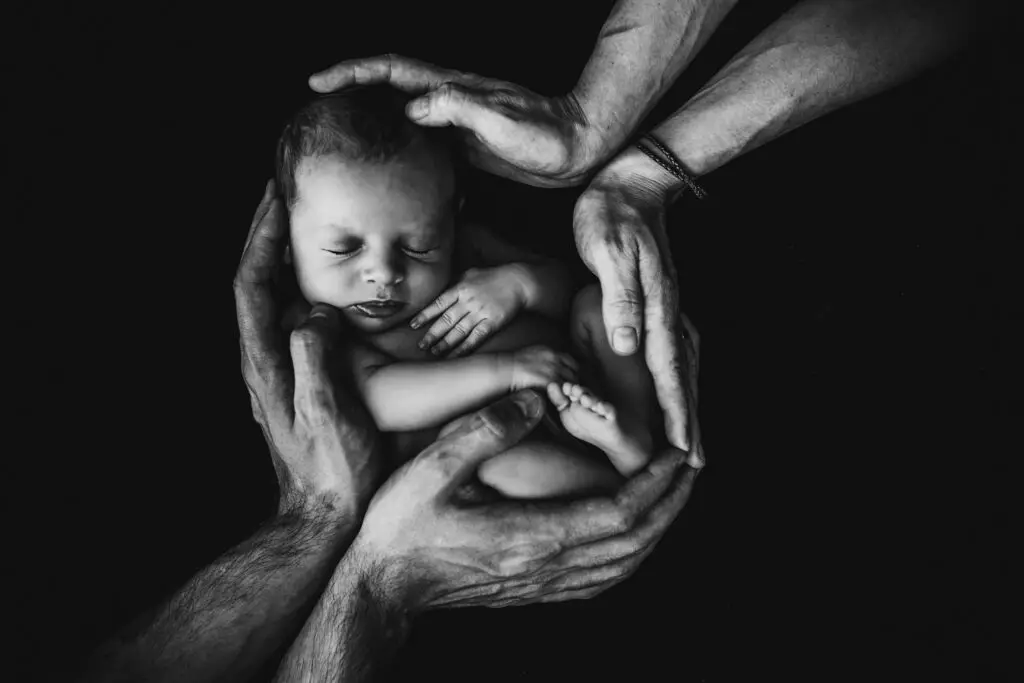Understanding Infant Sleep Safety
When it comes to your baby’s health, sleep safety is a crucial aspect that cannot be overlooked. In this section, we will delve into the importance of baby sleep health and the common risks associated with infant sleep.
The Importance of Baby Sleep Health
Quality sleep is essential for a baby’s growth and development. According to the National Sleep Foundation, infants need up to 17 hours of sleep per day during the first few months of life. This sleep aids in their physical growth, brain development, and immune system strength. Furthermore, a good sleep routine can help regulate your baby’s mood and behavior, reducing instances of irritability and fussiness.
Common Risks Associated with Infant Sleep
While sleep is vital for your baby’s health, it’s important to be aware of the potential risks that can occur during sleep. One of the most common risks is Sudden Infant Death Syndrome (SIDS), a condition where a seemingly healthy baby dies in their sleep with no clear reason. According to the American SIDS Institute, approximately 2,500 infants die from SIDS each year in the United States. Other risks include suffocation, choking, and entrapment, which can occur if the baby’s sleep environment is not properly set up. For instance, loose bedding, stuffed animals, or a too-soft mattress can pose a risk.
Understanding these risks is the first step towards ensuring your baby’s sleep safety. In the following sections, we will provide more detailed information on how to prevent these risks and create a safe sleep environment for your baby.

Baby Choking Prevention: A Must-Know for Parents
Ensuring the safety of your baby is a top priority for every parent. One common concern is the risk of choking, especially during sleep. This article aims to provide you with essential knowledge and practical steps to prevent sleep choking in babies.
Preventing Sleep Choking in Babies
Choking during sleep can be a terrifying experience for both the baby and the parents. It’s crucial to understand the risks and know how to prevent it. Let’s delve into these topics.
Understanding the risks of babies choking on vomit
It’s a scary thought, but babies can indeed choke on their vomit while sleeping. This is often due to gastroesophageal reflux, a condition common in infants where stomach contents flow back into the esophagus. According to the American Academy of Pediatrics, nearly half of all babies experience this to some degree during their first three months.
While most cases are mild, severe reflux can lead to sleep choking. Understanding this risk is the first step towards prevention.
Practical steps to prevent sleep choking
- Preventing sleep choking involves a combination of safe sleep practices and managing reflux. Here are some practical steps you can take:
- Always place your baby on their back to sleep. This position reduces the risk of choking.
- Keep the baby’s sleep area clear of soft objects, loose bedding, or any items that could increase the risk of choking.
- Consider using a firm, flat mattress without any pillows or blankets.
- If your baby has reflux, talk to your pediatrician about possible solutions. This could include medication or dietary changes.
Remember, every baby is unique and what works for one might not work for another. Always consult with your pediatrician or a sleep specialist if you have concerns about your baby’s sleep safety.
Newborn Vomiting at Night: Causes and Solutions
- One of the most distressing experiences for new parents is when their baby vomits at night. It’s not only alarming but also raises many concerns about the baby’s health. In this section, we will explore why this happens and how to handle it.
Why does my baby vomit while sleeping?
- There are several reasons why a baby might vomit while sleeping. It could be due to a simple case of overfeeding or a more serious condition like gastroesophageal reflux disease (GERD). According to Wikipedia, GERD is a digestive disorder that affects the lower esophageal sphincter, leading to the return of the stomach’s contents back up into the esophagus. This can cause your baby to vomit, especially when lying down.
How to handle infant vomit while sleeping
- Handling a baby who vomits while sleeping can be challenging, but there are a few strategies you can employ. Firstly, always place your baby on their back to sleep. This position reduces the risk of choking. If your baby is prone to vomiting, you might want to elevate the head of their crib slightly. This can help keep stomach contents down. Lastly, avoid overfeeding your baby and ensure they burp well after each feeding.
Remember, while occasional vomiting might not be a cause for concern, frequent or severe vomiting could be a sign of an underlying condition. If you’re worried about your baby’s vomiting, it’s always best to consult with a healthcare professional.
Key Points to Remember
| Cause | Solution |
|---|---|
| Overfeeding | Feed your baby smaller amounts more frequently |
| Gastroesophageal reflux disease (GERD) | Consult a healthcare professional for diagnosis and treatment |
| Incorrect sleeping position | Always place your baby on their back to sleep |
Understanding the causes and solutions for newborn vomiting at night can help you ensure your baby’s safety and well-being. Always remember, when in doubt, seek professional advice.
Baby Sleep Choking Risks: What You Need to Know
Ensuring your baby’s safety during sleep is a top priority for every parent. One of the risks that can occur during sleep is choking. Understanding the potential hazards and how to prevent them can help keep your baby safe.
Identifying Potential Choking Hazards
There are numerous items in a baby’s environment that can pose a choking risk. It’s important to be aware of these hazards and take steps to minimize the risk.
Common items that pose a choking risk
Small objects such as toys, buttons, coins, and even certain types of food can pose a choking risk to babies. Babies are naturally curious and tend to explore their environment by putting things in their mouth. This can lead to accidental choking if the object is small enough to fit into their throat. It’s crucial to keep such items out of your baby’s reach.
How to baby-proof your home
Baby-proofing your home is a key step in preventing choking hazards. This involves removing small objects from areas your baby can access, securing furniture that can tip over, and installing safety gates to keep your baby away from dangerous areas like stairs. It’s also a good idea to keep a close eye on your baby during playtime and mealtime, as these are common times when choking can occur.
By being aware of the potential choking hazards in your baby’s environment and taking steps to minimize them, you can help ensure your baby’s safety during sleep and at all times. Remember, prevention is always better than cure.

Safe Sleep Practices for Babies
Ensuring your baby’s safety during sleep is a top priority for every parent. Here, we will discuss some safe sleep practices for babies that can help reduce the risk of sleep-related incidents.
Creating a Safe Sleep Environment
Creating a safe sleep environment is the first step towards ensuring your baby’s safety. This involves choosing the right crib and mattress, and understanding the proper positioning for your baby’s sleep.
Choosing the right crib and mattress: The crib should be sturdy and free from any loose or broken parts. The mattress should fit snugly within the crib, leaving no gaps. It should be firm, flat, and covered with a tight-fitting sheet. Avoid placing pillows, blankets, or stuffed animals in the crib as these can pose a suffocation risk. According to the American Academy of Pediatrics, using a safety-approved crib and mattress can reduce the risk of Sudden Infant Death Syndrome (SIDS).
Proper positioning for baby’s sleep: Always place your baby on their back to sleep. This position is safest and can help reduce the risk of SIDS. Make sure the baby’s head and face remain uncovered during sleep. Avoid letting the baby get too hot. Keep the room at a temperature that feels comfortable for an adult in a short-sleeve shirt.
Remember, every baby is unique and what works for one might not work for another. Always consult with a healthcare professional if you have any concerns about your baby’s sleep safety.
Case Studies: Real-Life Scenarios of Sleep Choking
Understanding the risks of sleep choking is crucial for infant safety. To help illustrate this, we will explore two real-life scenarios that highlight the importance of safe sleep practices.
Learning from Others’ Experiences
Real-life experiences can provide valuable insights. Let’s delve into two case studies that highlight the risks associated with sleep choking in infants.
Case Study 1: A close call with a baby blanket
Meet Sarah, a first-time mother. One night, she was awakened by her baby’s distressed cries. She rushed to the crib and found her baby’s face covered with a baby blanket, struggling to breathe. Thankfully, she was able to remove the blanket in time, and her baby was unharmed.
This incident highlights the importance of following safe sleep guidelines, which advise against placing loose blankets in the crib. According to the American Academy of Pediatrics, blankets can increase the risk of suffocation and sudden infant death syndrome (SIDS).
Case Study 2: The dangers of stuffed animals in the crib
Next, we have the story of John and Lisa, proud parents of a six-month-old baby. They filled their baby’s crib with stuffed animals, thinking it would make the baby feel more comfortable. One night, they found their baby choking on a small piece of a stuffed animal that had come loose.
Again, this case underscores the need for safe sleep practices. Stuffed animals, while seemingly harmless, can pose a choking hazard. The American Academy of Pediatrics recommends keeping the crib free of soft objects and loose bedding to prevent suffocation and SIDS.
These case studies serve as stark reminders of the potential dangers lurking in the crib. By adhering to safe sleep guidelines, we can significantly reduce the risk of sleep choking and ensure our babies sleep safely.
Key Takeaways: Ensuring Your Baby’s Sleep Safety
As we conclude this comprehensive guide on infant sleep safety, let’s recap the most important points. These key takeaways will serve as a quick reference for you, helping to ensure your baby’s sleep safety.
Understanding the risks is the first step: Knowledge is power. By understanding the potential risks associated with infant sleep, such as choking and vomiting, you can take proactive steps to mitigate them. This includes understanding the causes, signs, and symptoms of sleep choking and newborn vomiting at night. Sudden Infant Death Syndrome (SIDS) is a risk every parent should be aware of. It’s important to note that while these risks can be alarming, they are relatively rare and can be significantly reduced with proper precautions.
Prevention is always better than cure: Implementing safe sleep practices is crucial. This includes placing your baby on their back to sleep, using a firm sleep surface, keeping soft objects and loose bedding away from the baby’s sleep area, and avoiding bed-sharing. Regular check-ups with your pediatrician can also help identify any potential issues early on.
Always stay informed and vigilant: Stay updated with the latest research and guidelines on infant sleep safety. Regularly consult with your pediatrician and don’t hesitate to ask questions. Always be vigilant about your baby’s sleep patterns and behavior. If you notice anything unusual, seek medical advice immediately.
Remember, your baby’s safety is paramount. By staying informed and taking the necessary precautions, you can ensure that your little one has a safe and sound sleep.















